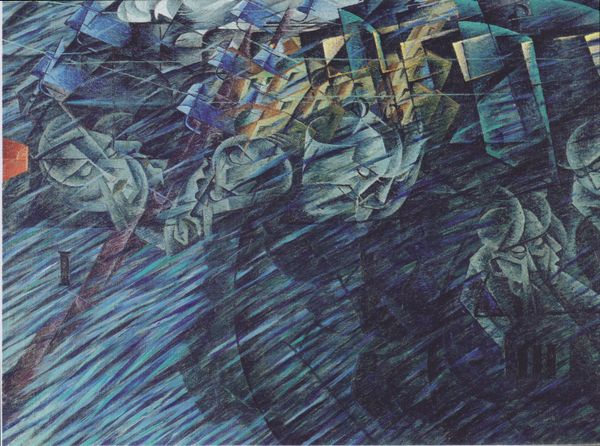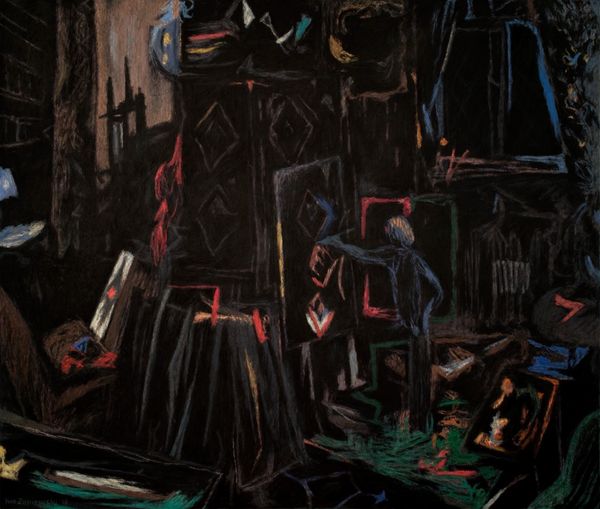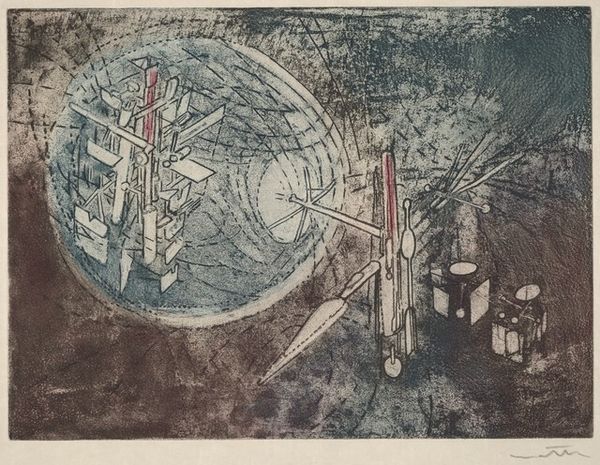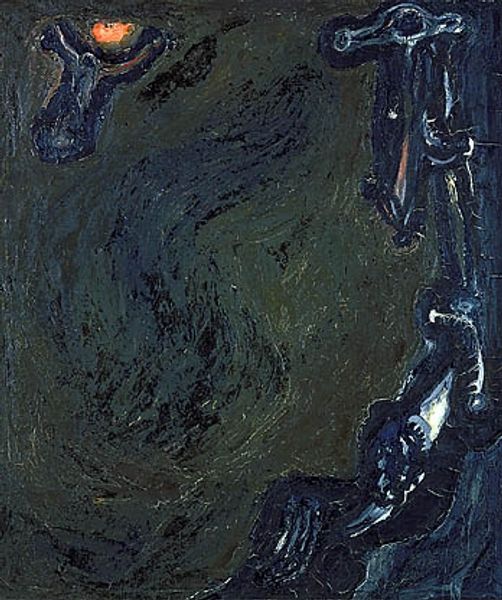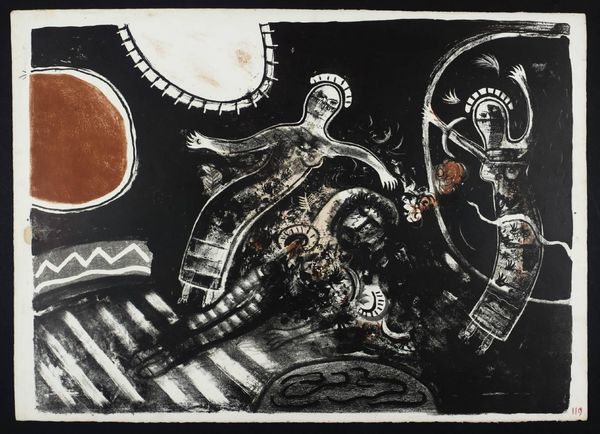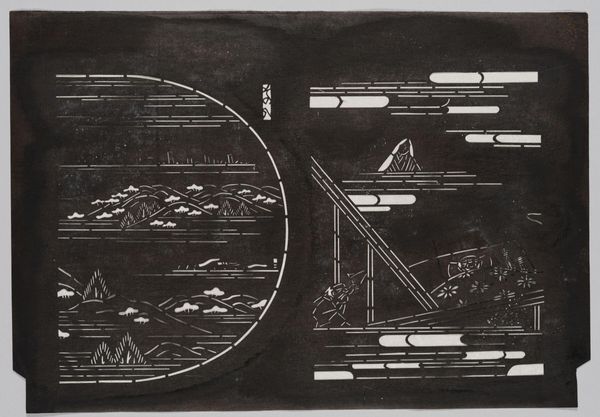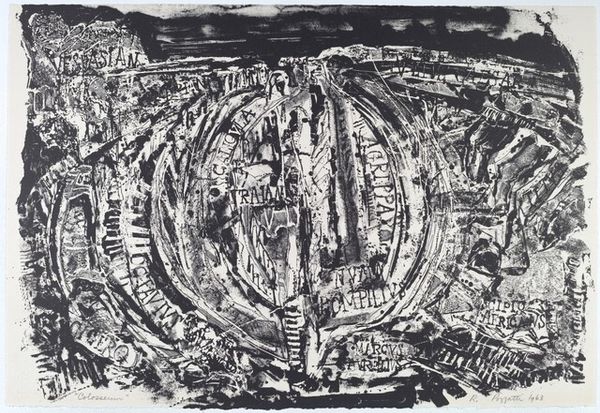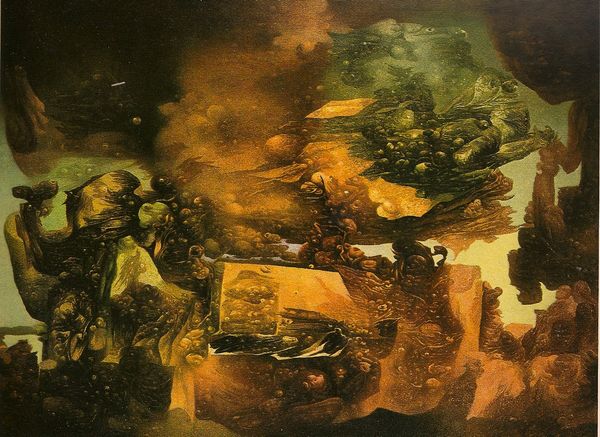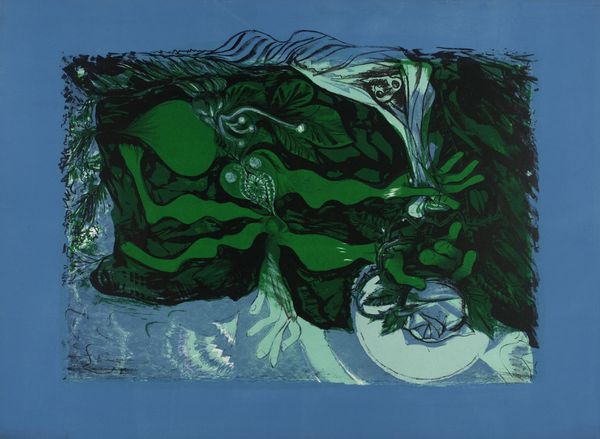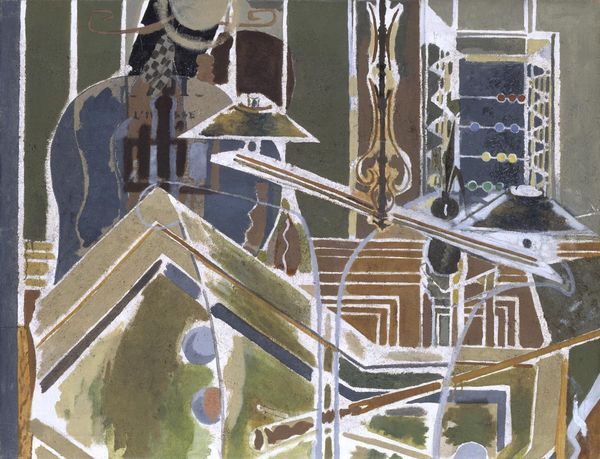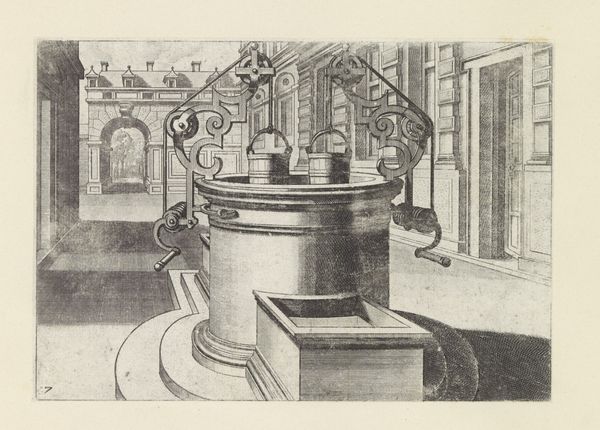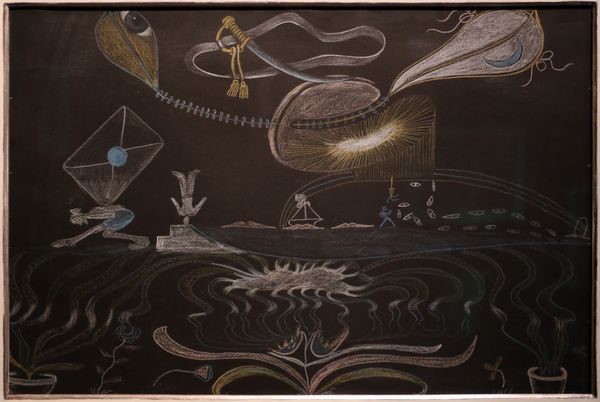
Copyright: Raoul Dufy,Fair Use
Curator: Dufy's "Homage to Claude Lorrain," created in 1927, immediately casts me into this contemplative mood with its muted colors and somewhat dreamlike setting. What do you think? Editor: Indeed. I’m struck by the composition; there's a tension between the solid geometry of the fountain and buildings, and the ethereal quality of the light and water. The darker palette almost feels like a photograph in the moment just before complete visibility. Curator: Absolutely, it feels suspended in time. Raoul Dufy, working with oil on canvas, has taken the idealized landscapes of Claude Lorrain and filtered them through a decidedly modern lens, all those loose brushstrokes seem to blur what exactly we are looking at. Editor: Note also the artist’s reduction of forms. Figures and architectural details are rendered with swift, almost calligraphic strokes, yet somehow, they still evoke a clear sense of place and atmosphere, and create depth and texture. This is modernism meeting impressionism head on. Curator: It is a loving echo isn't it? More a conversation. The little details of a past way of life seem to peek out at me-- the horse drawn carriage. Perhaps Dufy sought a connection between his present and Claude’s idyllic past? Editor: Precisely. Semiotically, we see signs, fragments that recall Lorrain's grand vistas—but they're reimagined through Dufy’s focus on subjective experience and the changing urban landscape of his time. The darker background gives way to lighter color schemes for those little details in the foreground like a storybook illustration. Curator: The artist isn't creating an imitation but an investigation. To see the past through a future lens! Editor: An apt description. By dissecting Claude’s visual language—light, form, subject—Dufy has created a fresh aesthetic entirely his own. It's the interplay between representation and abstraction, I suppose. Curator: I can see why this is a favorite of visitors, it invites you in to look closer. Editor: It most certainly does, an intriguing bridge across art history.
Comments
No comments
Be the first to comment and join the conversation on the ultimate creative platform.
